
We all scroll Instagram and love those beautiful, collected homes. They look effortlessly chic. Then we see the high price tags on new furniture. I used to spend money trying to get that look. I ended up with a high credit card bill and a house that felt too plain. Everything changed when I discovered the powerful Thrifting Secrets of hunting for vintage treasures. I found that the best decor has a real story. Now, I will share my journey with you. I’ll show you how to find beautiful pieces on a small budget.
Unlocking the Aesthetic: Your First Dive into Thrifting Secrets
We live in a world with too much fast furniture. Most homes have mass-produced items. The most popular homes today feel unique and personal. They look curated. This “collected” style means your home has grown over time. It is the sign of great taste. The real secret? It always involves old, pre-loved, or thrifted items.
Thrifting is no longer just for saving money. It is a smart design choice. But walking into a huge thrift store can feel overwhelming. How can you find the good stuff among all the clutter? How can you make sure your finds look expensive, not messy?
This guide reveals my personal thrifting secrets. It gives you simple advice and easy ‘how-to’ methods. You can transform your home with stylish, unique items. Best of all, you will keep your budget low.
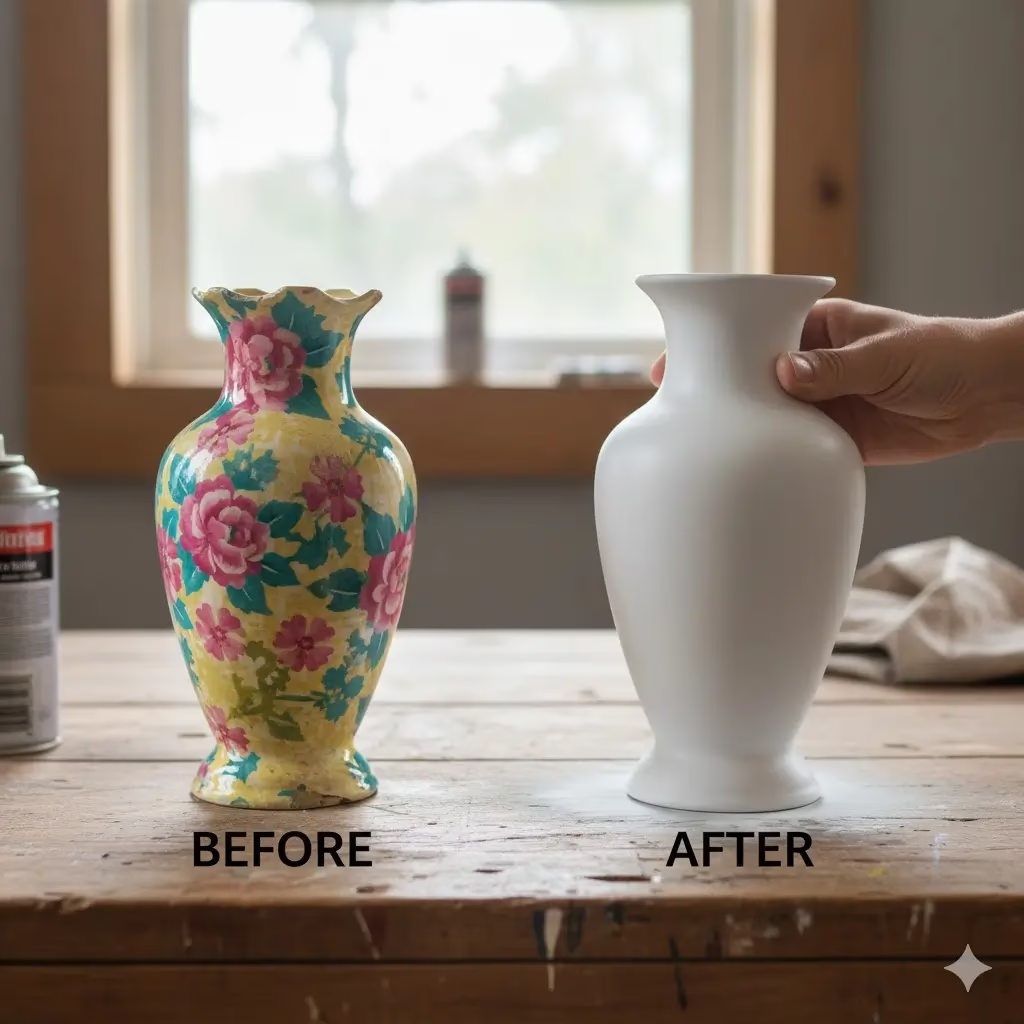
Part 1: Plan Your Hunt (Success Starts Before You Leave Home)
Many new thrifters make one big mistake. They go without a plan. Finding aesthetic items is not about luck. It is about being prepared.
Secret 1: Know Your Style and Your Sizes
Applying the best Thrifting Secrets starts with forming a clear vision before visiting any store: define the style you want, and identify the specific items you need.
How to Do It: Make a “Thrift List”
- Look Around Your Home: Walk through your rooms with a notepad. Write down what you need. Do you need art for an empty wall? A tray for the coffee table? A better light for a dark corner?
- Pick Your Style Words: What is your style? Mid-Century Modern, Coastal Grandma, Dark Academia, or Boho-Eclectic? Knowing these words helps you focus your search. For example, a Mid-Century modern buyer looks for solid teak wood. They want simple shapes. A Coastal Grandma buyer looks for brass frames and blue and white plates.
- Measure Everything: You must do this. If you need a dresser, measure the space exactly. Save those measurements (up, across, deep) on your phone. If you want a dining table, know the smallest and largest size that will fit in your space.
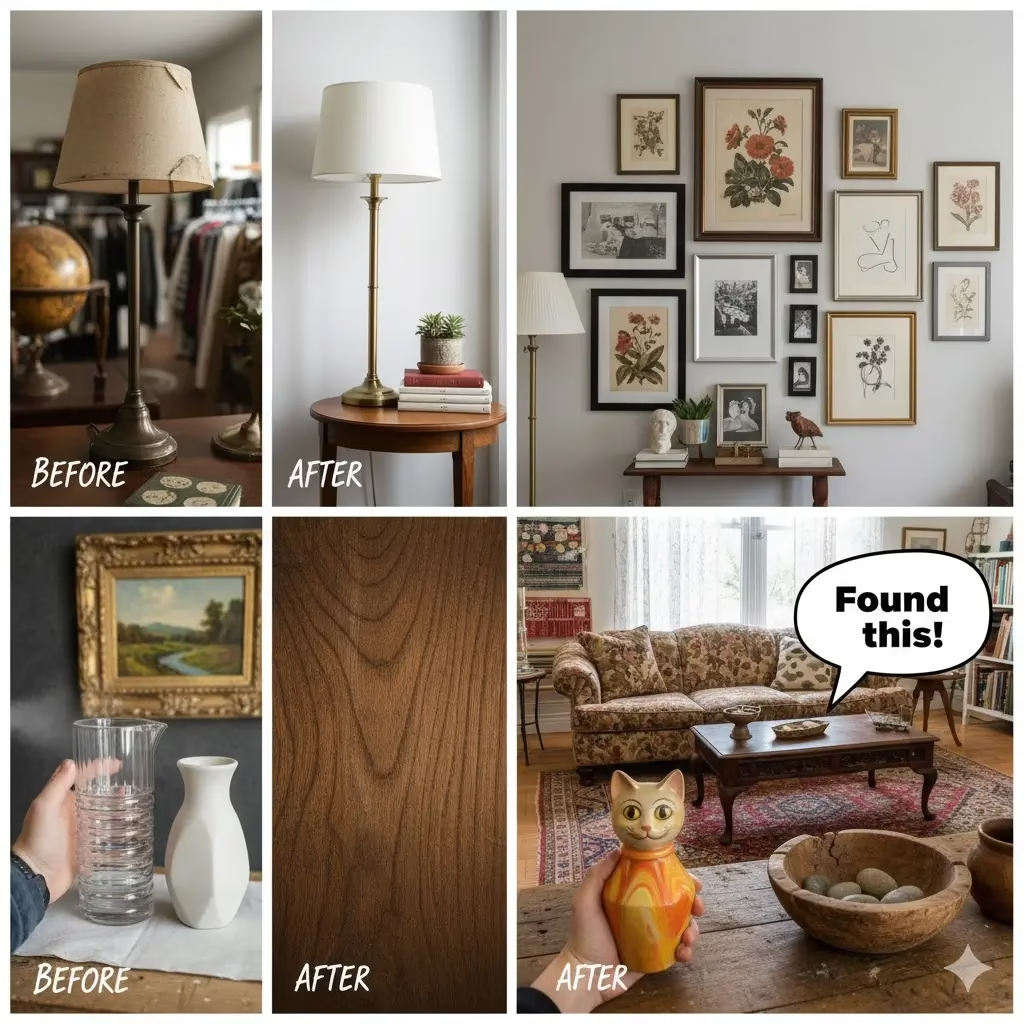
Secret 2: Map Out Your Treasure Route
Mastering Thrifting Secrets means knowing that not all second-hand stores are the same, as different shops hold unique finds.
- Charity Shops (Goodwill, Salvation Army): These are best for small decor items, kitchen gear, and surprise accessories. They get many new donations every day.
- Local Thrift/Consignment Shops: Prices here are often a little higher. But they have better quality, curated furniture. They offer truly unique vintage items.
- Estate Sales: This is the best place for original art, high-end furniture, and special collections. You must research these sales. You usually need to arrive early.
- Flea Markets/Swap Meets: These are great for finding fabrics, raw materials, and for negotiating prices.
How to Do It: Plan Your Day
Use a map app to plan a trip. Try to visit 3 to 5 stores in one area. Start at the nicer, more curated shops first. Then, go to the busy charity stores. Finish with a quick look at an antique mall if you have time. This plan helps you see the best items before they sell.
Part 2: Searching Smart (Mastering the Art of the Search)
The search is often where people get lost, but one of the key Thrifting Secrets is understanding that a thrift store needs a different kind of focus than a department store.
Secret 3: Use the 4 Cs Inspection Rule
When buying decor for your aesthetic, quality is important. A bad find, even a cheap one, just becomes clutter. Use the 4 C’s to check any item quickly.
- Condition: Does the structure feel strong? For wood, check for rot or cracks. Check for weak legs. For ceramics, look for chips or thin cracks. For fabric, check for moth holes or stains.
- Character (The “Vibe”): Does it look unique? Does it have a cool shape or a history? A wooden box with a few scratches often has more character than a new, perfect one. Do not buy items that look generic or like modern, cheap copies.
- Cost: Always ask: “If this item were new at a regular store, what would it cost?” This helps you decide. If a chipped mug is $10, skip it. If a solid brass lamp is $35, buy it.
- Conversion Potential: This is key for aesthetic finds. If the color is bad or the fabric is old, can you easily convert it? Can you make it beautiful? For example, an ugly wooden chest with a great shape is perfect for a coat of paint. An item that needs major fixing should probably be left behind.

Secret 4: Look Past the Mess (Visual Filtering)
Thrift stores are often very messy. The “ugly” items hide the “gold.”
How to Do It: The Aesthetic Scan
- Focus on Material, Not Color: Forget the bright, ugly paint or the dust. Look only for the material: Is the base solid marble? Is the bowl real brass? Is the vase hand-blown glass? Good materials always look high-end. The bad color can be fixed.
- Hunt in Weird Aisles: Skip the main furniture floor—everyone goes there. Go to the craft section for old buttons or unique frames. Check the kitchen gear for cast iron, nice cutting boards, or unusual containers.
- Look for Great Shapes: Train your eye to see beautiful shapes. A big, unique vase instantly looks chic with a coat of matte white paint. A simple wooden cabinet with thin, nice legs has huge potential.

Part 3: The Aesthetic “Thrift Flip”
One of the best Thrifting Secrets is recognizing that most finds need work; the magic is in the simple, big changes that transform “old stuff” into aesthetic decor.
Secret 5: Master the Paint Overhaul
Paint is your most powerful tool. It quickly moves a piece from cheap to chic.
How to Do It: The Stylish Paint Job
- The Matte Rule (Black or White): Use matte black or matte white spray paint on almost any small item (vases, ceramic animals, old statues, candleholders). This gets rid of bad colors. It makes people look at the item’s shape instead. This gives instant sophistication.
- Furniture Makeover: Chalk paint is the easiest way to update wood. Choose soft, muted colors (like sage green, dusty blue, or light brown). Always sand the piece lightly. Clean it well. Use a good wax or sealer to make it look professional.
- Change the Handles: Even if you keep the original wood finish, changing the knobs helps. Take off the old plastic or brass handles. Add modern leather pulls or cool glass knobs. You can find these at hardware stores or online. This simple change takes ten minutes and updates the whole piece.
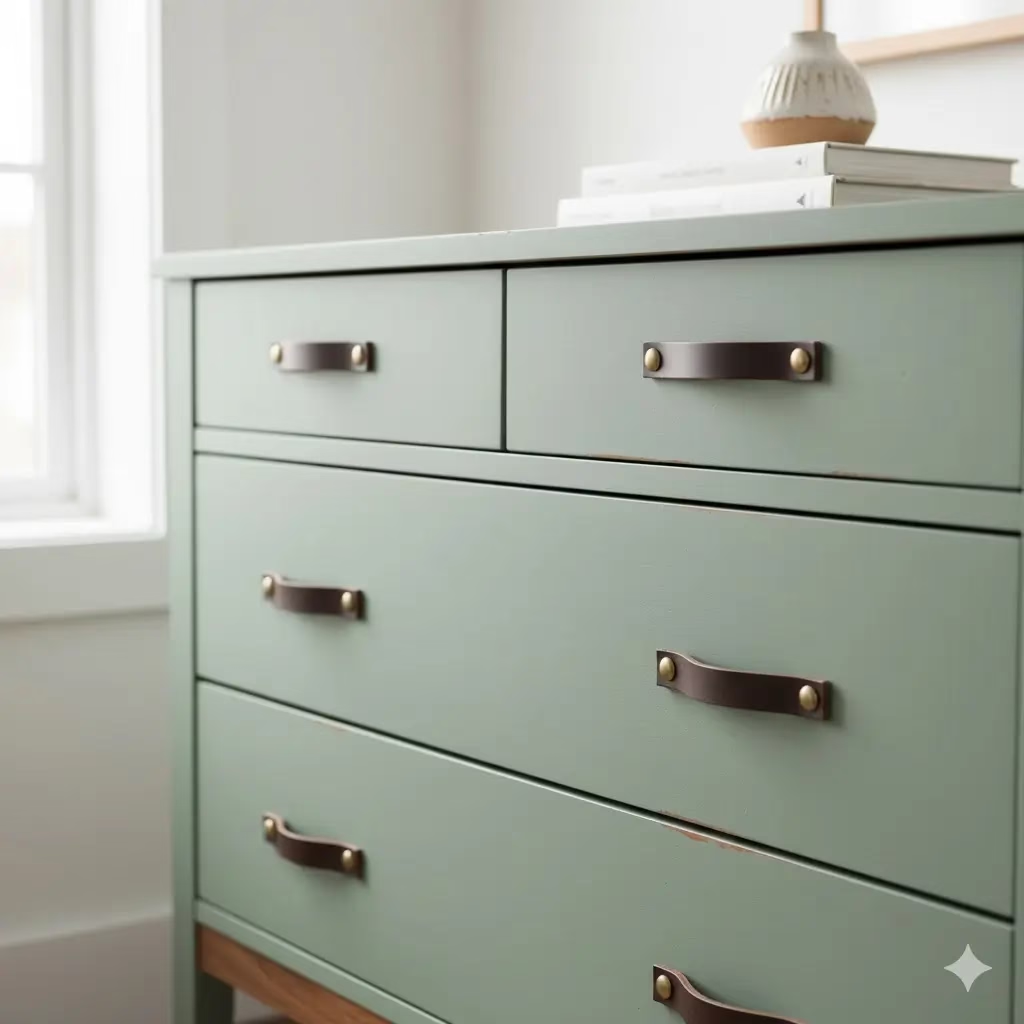
Secret 6: Build a ‘Collected’ Gallery Wall
Art at the thrift store is often ignored. Yet, it offers the most personality for your walls.

How to Do It: Make Thrifted Art Look Expensive
- Ignore the Picture: Unless it is a special painting, ignore the actual print or image. Focus on the frame. Look for real wood, unique gold paint, or deep carvings.
- Use a New Mat: You can keep the old art. But change the stained, yellowing paper border (the mat) with a new, thick, white one. This instantly makes the piece look modern. It puts the focus back on the art.
- The Simple Abstract: Did you find an old canvas with good texture but a bad image? Flip it over. Paint the back white. Create your own simple abstract art using only one or two colors. Now you have custom, original art in a vintage frame.
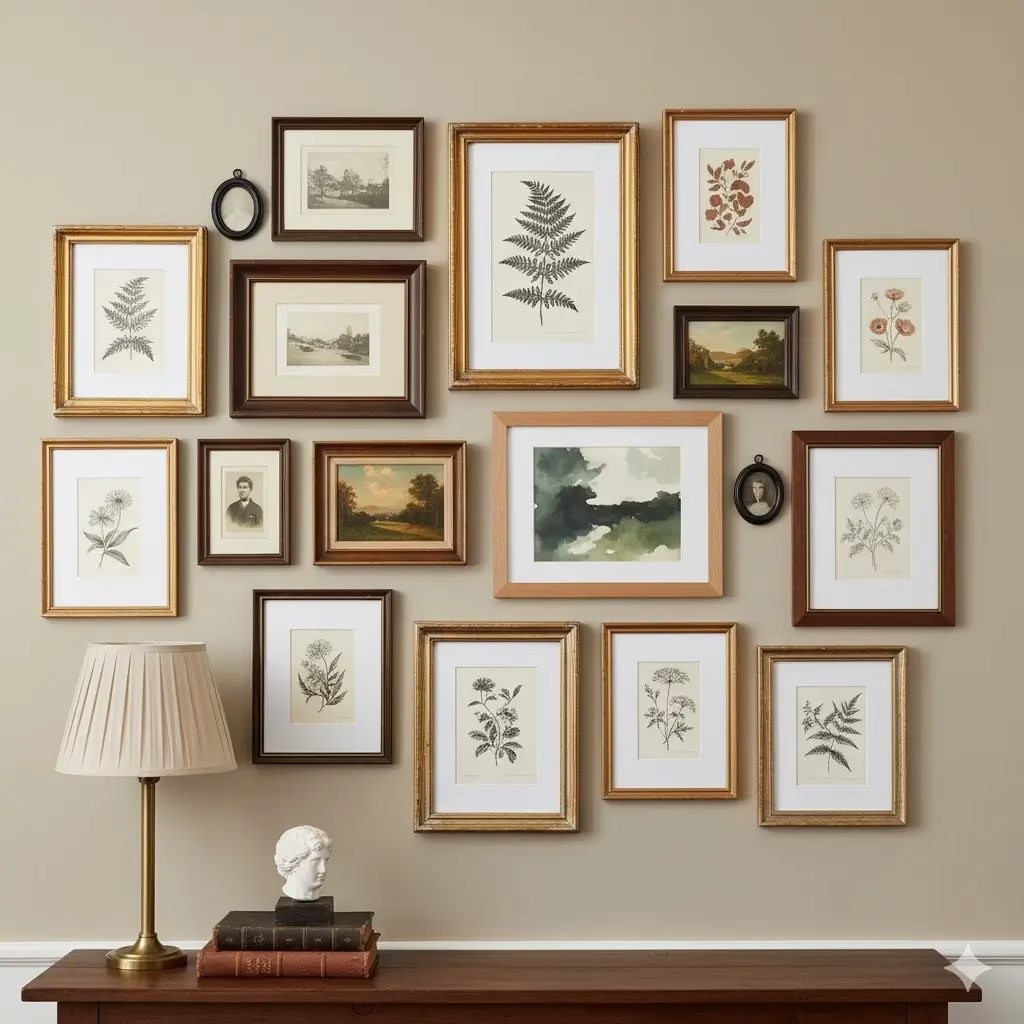
Part 4: Style and Placement (Making Thrifted Look High-End)
This is the final step. Here, your thrifting secrets truly pay off. You make the items look planned, not random.
Secret 7: The Rule of Three and Stacks
High-end stylists use these rules. They make any group of objects look planned.
- The Rule of Three: When you style a shelf, coffee table, or fireplace mantle, put objects in odd numbers (3, 5, or 7). The uneven numbers look better to the eye.
- Stacks and Layers: Use stacks of books to make different heights. You can turn the book spines inward, or use books that are all one color. Place a thrifted item on top of the stack. This raises it up. For example, a small brass bowl on a stack of two old books looks great.
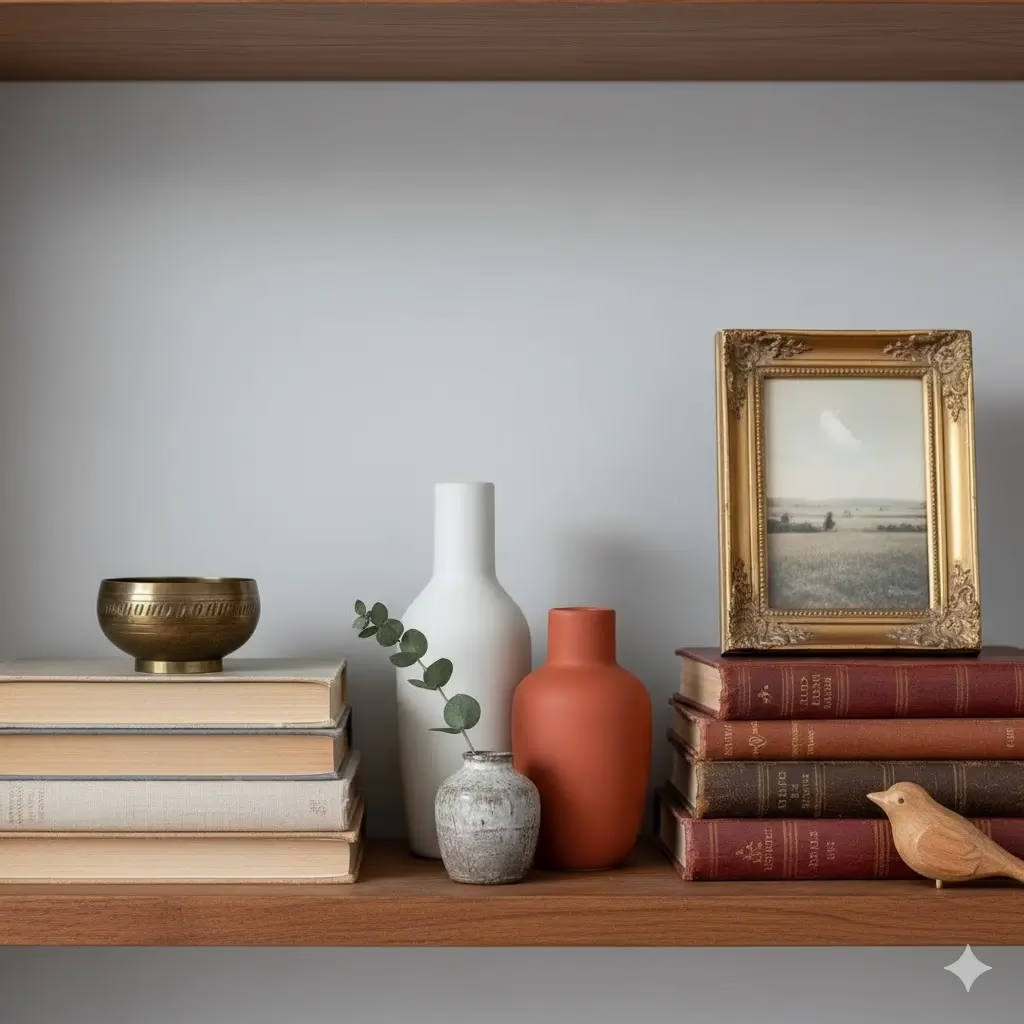
Secret 8: Mix Textures and Eras
One of the most powerful Thrifting Secrets is recognizing that a truly aesthetic home never uses only one style or era; the compelling difference between old and new is what makes a space interesting.
How to Do It: Smart Contrasts
- Mix Rough with Smooth: Put a rough, hand-made ceramic vase next to a new, smooth, modern mirror.
- Mix Time Periods: Put a worn, old mahogany desk in a room with a sleek, new, simple lamp. The new piece makes the old piece’s character stand out. The old piece makes the new piece look special.
- The High-Low Accessory: Use your thrifted brass items, woven baskets, or old linens. They soften modern, simple pieces. This is the biggest thrifting secret for getting that expensive, layered look.
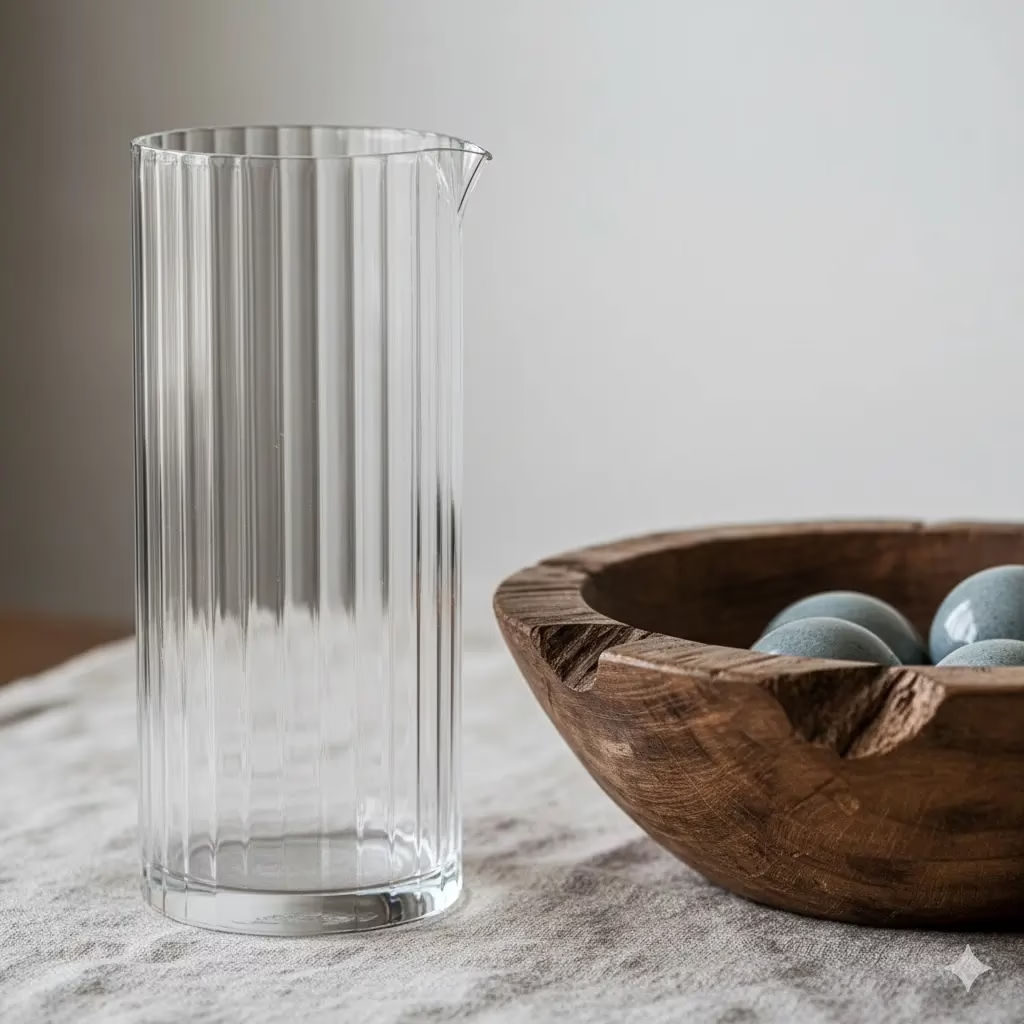
Part 5: Thrifting Secrets for a Better World
Thrifting is about more than style and budget. It is also good for the world. Every thrifted item means one less item in a landfill. It is a vote against constant, quick buying. When you use these thrifting secrets, you choose beautiful, lasting items. You are building a home that is both lovely and responsible. This careful way of decorating is the most valuable secret of all.

Frequently Asked Questions (FAQ)
Q: Where should I look first in a big thrift store?
A: Focus on sections with the best quality materials. Look at the art and frames section. Look at the glass and ceramic aisle. Check for heavy items and unique colors. Look at the lamp section. Often, only the lamp shade is ugly. The lamp base might be solid brass or marble.
Q: How do I clean a thrifted item safely?
A: For fabrics, use a cleaner that removes odors. Wash them in hot water if possible. Or, take them to a professional cleaner. For wood, use a mild wood soap to remove dirt. Then, use a wood polish. For glass and ceramics, just wash them with soap and water. Use a soft toothbrush and baking soda paste for tough spots.
Q: Can I ask for a lower price at a thrift store?
A: Large store chains usually have fixed prices. Do not try to negotiate there. But, you can ask for lower prices at local, independent shops, consignment stores, and estate sales. This is often expected. Always be kind. Never offer a price that is too low. Try saying, “Will you take $X for this item?” Or, “I like these three items; can I get a small discount for buying them together?”
Q: What is the single best item to always look for?
A: Mirrors. An old mirror with a detailed or unique frame is the easiest way to add light, depth, and charm to a room. Even if the frame is damaged, a coat of matte spray paint can make it look high-end.
Reference Section
This article shares common ideas and methods used in interior design, furniture fixing, and sustainable home decor. It focuses on the following concepts:
- NIH – Art and Psychological Well-Being: Linking the Brain to …
- Homesandgardens – Invest in staples, thrift your fun
- Zevyjoy – The Benefits Of Thrifting For Your Home
Recent Posts


